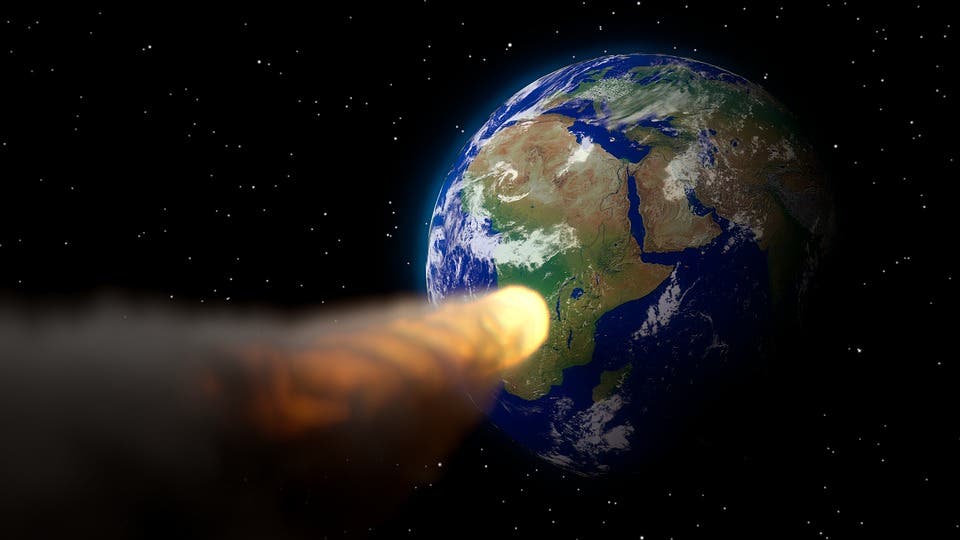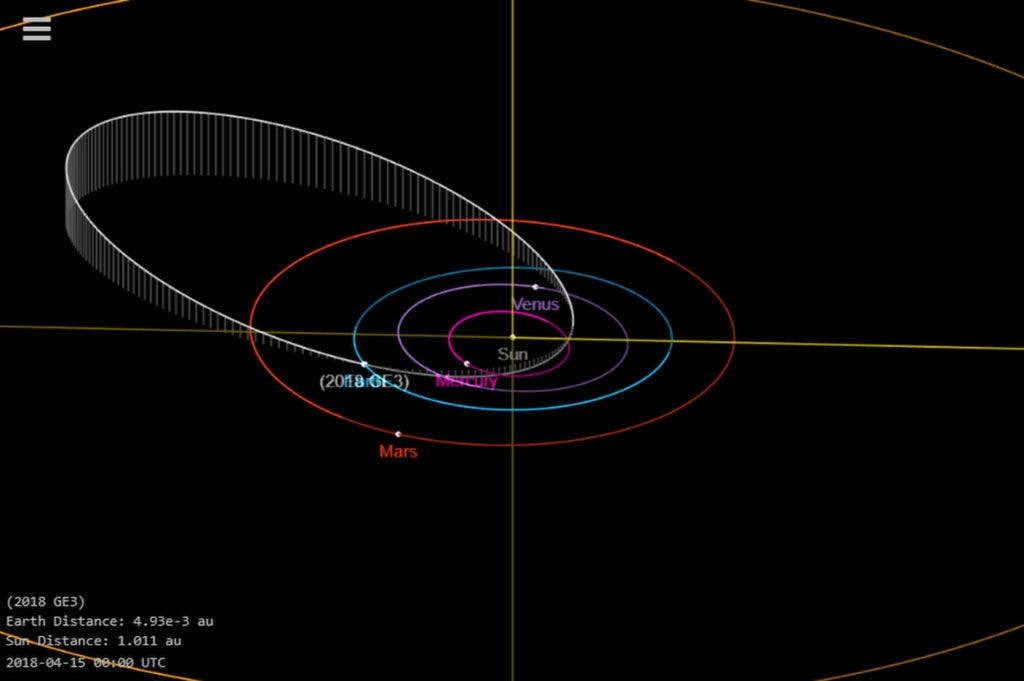
Yesterday, on April 15, an asteroid the size of a football field came mighty close to Earth, whizzing past our planet at about half the distance from here to the moon. The really scary part is that the asteroid was detected just a mere couple of hours before the flyby.
The cosmic body was eventually picked up by the Catalina Sky Surve, a NASA-sponsored program based at the University of Arizona in Tucson. During its closest approach, the asteroid called 2018 GE3 came only 119.500 miles (192,300 kilometers) away from to Earth. Scientists estimate, 2018 GE3 had a diameter of 157 to 361 feet (48 to 110 meters), about three times larger than the object that caused the famous Tunguska event in the year 1908 — an explosion over the sparsely populated Eastern Siberian Taiga, which flattened 2,000 square kilometers (770 square miles) of forest. Whenever asteroid avoidance is discussed by scholars, the Tunguska event inevitably pops up as an example of the kind of damage our planet will inevitably face in the future.
The asteroid is also considered to be up to six times larger than the meteor that broke up over Chelyabinsk, Russia, in 2013. You might remember all the viral videos that surfaced at the time, although the 1,200 people injured by the event certainly do not do so fondly.
Asteroid 2018 GE3 flew past us today, half the distance to the Moon. Around 50-100 m in diameter, it was several times the 2013 Chelyabinsk meteor, around the size of the 1908 Tunguska event ~ easily enough to destroy a city. We had less than a day's warning. (📷 Michael Jäger) pic.twitter.com/kElrxBiUoB
— Andrew Rader (@marsrader) April 16, 2018
Asteroids similar in size to 2018 GE3 are quite rare, and shouldn’t come close to our planet more often than once every couple of years. Most such bodies originate from the asteroid belt, the circumstellar disc in the Solar System located roughly between the orbits of the planets Mars and Jupiter.

All of this begs the question: if an asteroid this big is quite rare, why didn’t we spot it earlier? Well, identifying and tracking asteroids is very tricky, and some are never picked up by our instruments even though they might fly by Earth. Most asteroids are only a couple dozen meters in diameter, which makes them difficult to track. What’s more, asteroids also reflect little light or, at least, not enough to be easily picked up by our telescopes. And because a near-Earth asteroid will zip past very quickly in the night’s sky compared to a planet, telescopes also have to be positioned in the right area and at the right time to catch it. Luckily, NASA has a program which is dedicated to tracking asteroids that might cause catastrophic damage on impact using a network of telescopes. The program, however, does not track asteroids as small as 2018 GE3, which is still very menacing. Close call!



